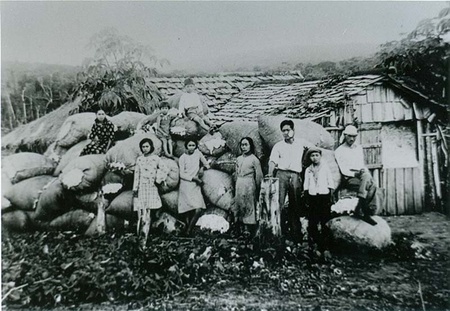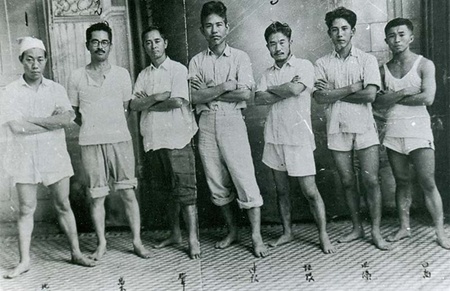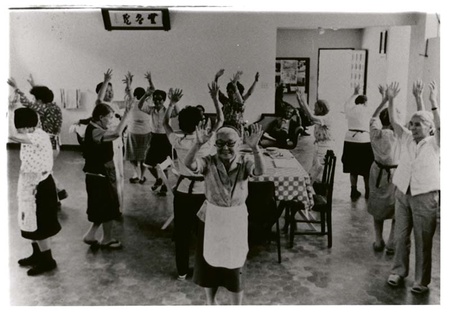Japanese immigrants first came to Brazil in June 1908. These families worked on coffee plantations under contract to coffee planters in search of cheap labor. After the United States closed its door to Japanese immigration in 1924, the Japanese government facilitated the accelerated immigration of Japanese into Brazil.
However, life was so unbearable that most Japanese left the plantations for urban areas, suburbs, or new Japanese farm settlements. São Paulo city and its surrounding areas were the main areas of concentration.
By the 1930s, the Brazilian government became increasingly wary of Japanese residents, culminating in the introduction of a quota system for immigration in 1935 and a ban on Japanese education three years later.

Japanese farm family that began producing cotton after the coffee plantation prohibition, ca. 1930s. (Collection of Museu Histórico da Imigração Japanesa no Brasil)
World War II: Kachi-gumi vs. Make-gumi
The Pacific War added more restrictions on the lives of Issei, including the ban on holding meetings and traveling without permits. Some residents in the coastal areas and downtown São Paulo were forcibly removed.
The war also caused a deep rupture between two factions in the immigrant society—one believing in the victory of Japan and the other accepting its defeat. It was not until 1954 that the conflict finally subsided and a new chapter of Brazilian Nikkei history began with the influx of postwar immigrants between 1953 and 1973.

Members of the kachi-gumi group being processed for public disturbance in the city of Tupã in 1947. (Collection of Museu Histórico da Imigração Japonesa no Brasil)
Reverse migration
While the pre-war Nikkei households left the rural areas for the cities, the postwar settlers revived Japanese agriculture in Brazil. In the 1990s, 250,000 Nikkei in the prime of their lives went to Japan for dekasegi work due to the recession.
Now, with the estimated population of 1,228,000 in Brazil, the Brazilian Nikkei community is faced with a host of new issues, including the care for the elderly and the relative indifference of the younger generations to Nikkei community affairs.

Traditional Japanese dancing is enjoyed by the residents of Assistencia Social Dom José Gaspar (Ikoi no Sono), a home for the elderly in São Paulo, 1980. (Photograph by Yuji Kusuno. (Collection of Museu Histórico da Imigração Japonesa no Brasil)
Source:
Akemi Kikumura-Yano, ed., Encyclopedia of Japanese Descendants in the Americas: An Illustrated History of the Nikkei (Walnut Creek, Calif.: AltaMira Press, 2002), 95.
*Developed in collaboration with the Museu Histórico da Imigração Japonesa no Brazil.
© 2002 Japanese American National Museum






